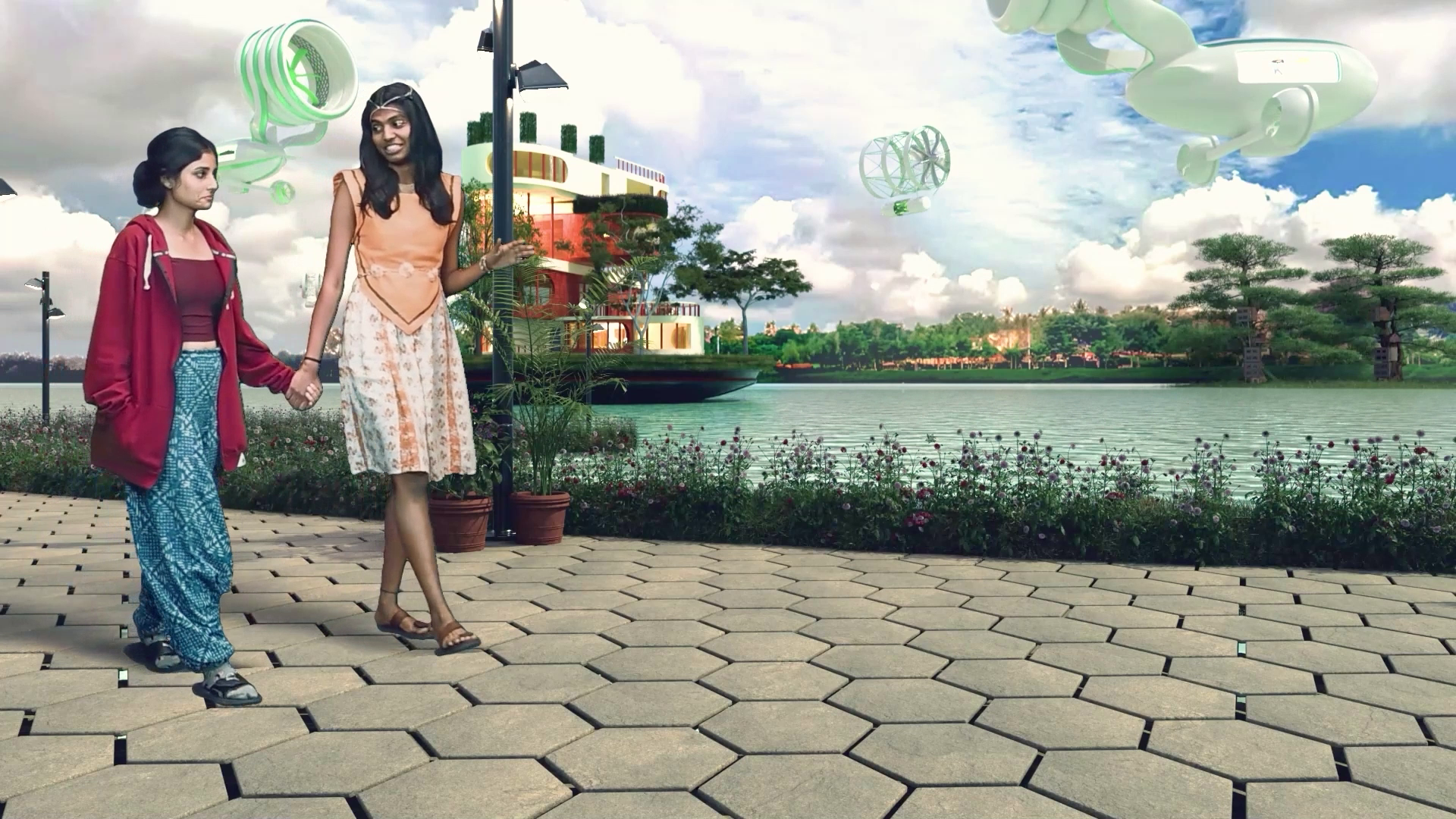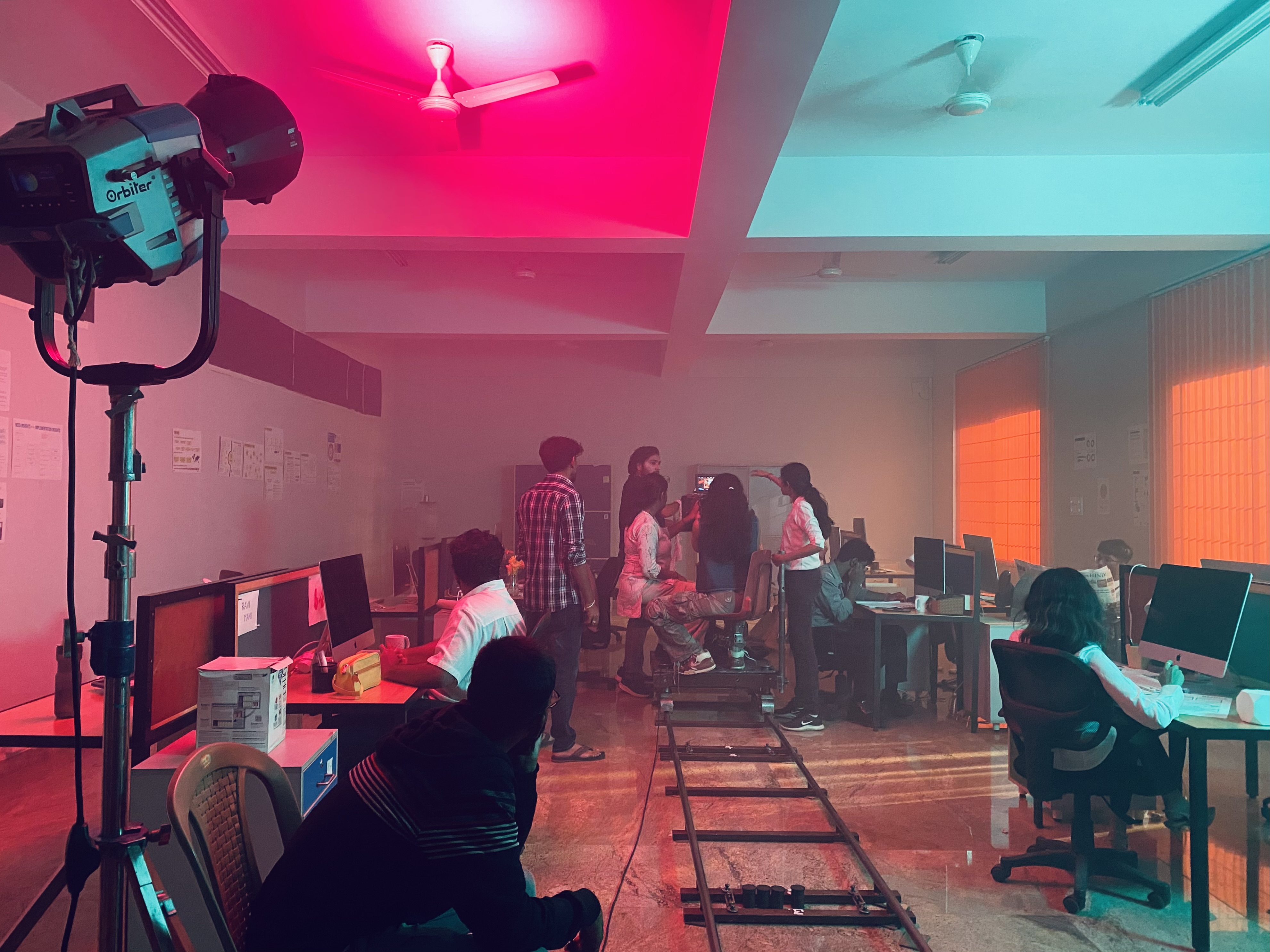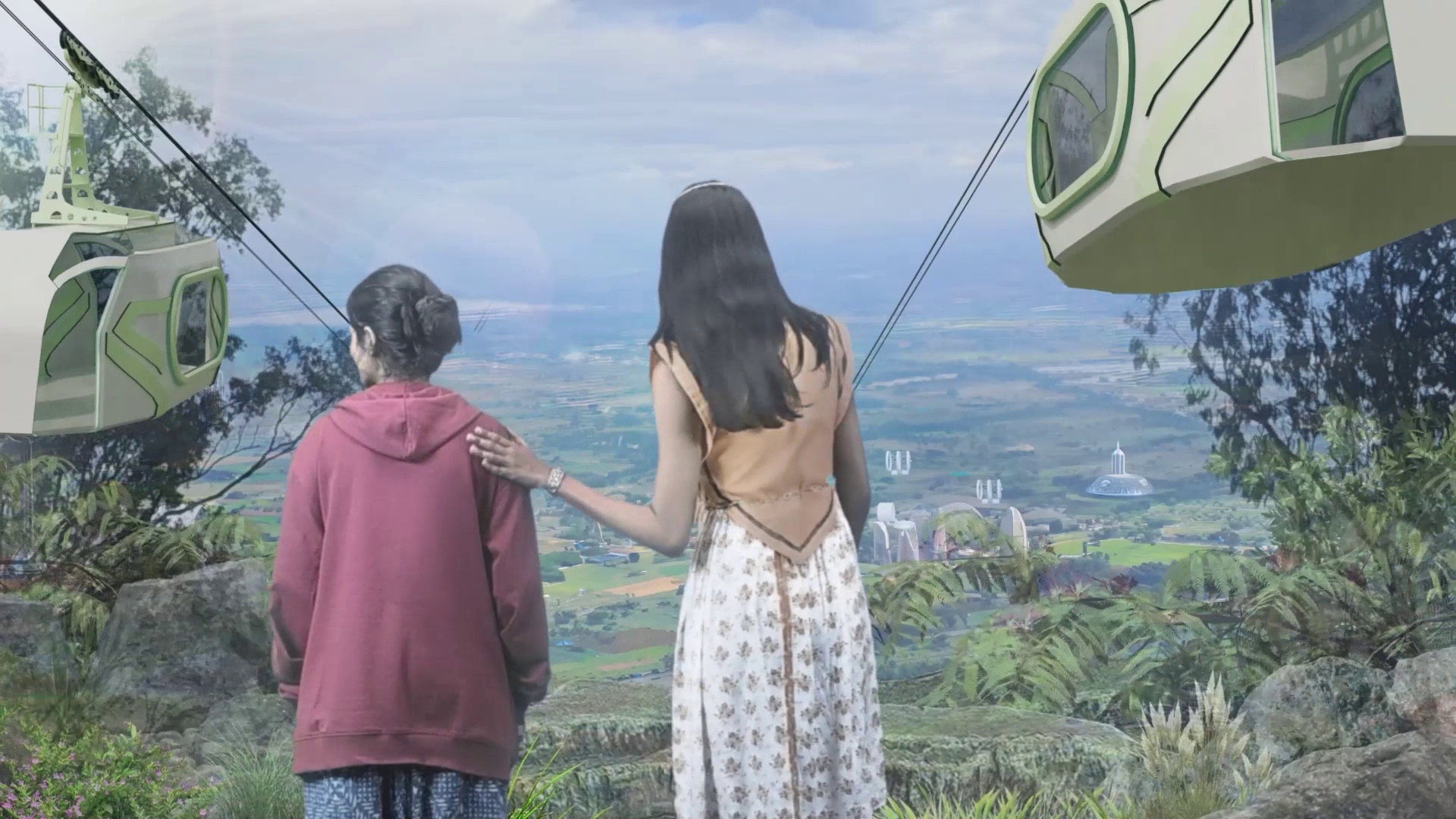“For the things we have to learn before we can do them, we learn by doing them” - Aristotle
The Digital Media Production Program offers two distinct pathways.
Visual Effects
This pathway aims to develop technical and creative competency in individuals who can generate industry-standard computer-generated imagery (CGI). They will engage in comprehensive skills training covering several aspects of film production and post-production.
Film Production
This pathway is designed to train students in shoot-based live-action production. You will be able to learn visualisation techniques for many film and video production formats using format-specific conventions.
About the Program
The three-year Digital Media Production course is designed to enable students to develop skilled qualifications in either Film Production or Visual Effects using digital technology. Through focused skill-building, collaborative learning, and industry experience, students will learn how to use technological innovation and artistic skills effectively in a collaborative and dynamic culture of creation. Upon completion, students will be well-prepared for several roles in the rapidly expanding field of Digital Media Production.
The core content of the course focuses on:
- Focused Excellence in Film Production or Visual Effects through intensive skill-building.
- Technical Innovation through training in the latest technologies in Digital Media Production.
- Multidimensionality
- Spirit of Collaboration

Image: Still from the student production ‘Bangalore: Human-Made Terrarium’
Vision
As media become increasingly intertwined with our daily lives, there is a growing need for skilled professionals who can produce audio visual content that engage audience across viewing platforms. Today, Media and Film production is a complex amalgamation of live action processes and computer-generated imagery (CGI) in a wide production environment with interrelated departments. Digital production and post-production are crucial to everyday entertainment, irrespective of the content being realistic or fantastical.
Sector
The three years of this course align with levels 4, 5, 6, and 7 of the NSQF guidelines and create skilled practitioners for the above sectors.
NSQF, or National Skills Qualifications Framework, is a nationally integrated and competency-based education framework that allows individuals to achieve their desired competence level. In NSQF, qualifications are organized according to the levels based on skills, knowledge, and aptitude.
Key Elements Of National Skills Qualification Framework (NSQF):
- Skill proficiency promotion to create individuals with international equivalency
- Multiple entries and exit provisions for students
- Opportunities to help students become lifelong learners
- Preparedness for the industry standard with the development of skills
- A transparent mechanism for the growth of students

Image : Track shot with lights

Image : Still from the student production ‘Bangalore: Human-Made Terrarium’
Course Structure
The core principles that govern the design of the unit are as follows:
Mastery Learning with Guided Practice breaks down competences or skills into sub-skills, methods and techniques. Through targets taught through modeling and direct instruction followed by guided and independent practice, mastery of core competences and skills are achieved.
Work Related Learning is the co-design of opportunities/projects by industry based professionals or employers or other stakeholders on the one hand and faculty on the other. Guided and facilitated by mentors this space allows for future employers to participate in the learner’s journey.
Industry Linkages includes both exposure, orientation and direct interactive learning in real time contexts. This is towards specific jobs and roles, as well as work experience within each course’s respective industrial sector. Linkages between academic institutions and creative industries is inclusive of both economic and social benefits of innovation.
Fab. Ateliers builds on the values of thinking, modeling and making to challenging design contexts drawn from indigenous knowledge and / or tools from digital technology.
Public Labs are open spaces that foster DIY thinking along with citizen science and other initiatives to build a culture of learning that is self-initiated, independent and collaborative. Public Labs are open to all learners for purposes of self-study, learning, archiving and developing personal interests in technologies.
Bootcamps foster accelerated learning of concepts, skills and technologies that are directly linked to either employable, entrepreneurial or livelihood based skills. Working through immersion, with a focus on hands-on problem solving and peer learning rather than instruction.
Hackathons can range from competitions or events over days to half-day jams or a one day hack-fest. This format encourages brainstorming, pitching of concepts, working in teams and also planning projects as well as development of prototypes.
Pathways
Digital Media Production offers a choice of two pathways.
People
Enquiries

FAQs
Digital Media Production is a practice that uses digital technology in the production and conception of art and design in the fields of film production and visual effects. Although most of the media work today are digitally mediated, we do value processes and learning modes that come from traditional modes of visualization and filmmaking. The course addresses the complex ecosystem of contemporary moving image production that is heavily dependent by digital technology.
The domains of film production and visual effects are growing with constant innovation and rapidly changing technology. If you are interested in any of these fields and want to engage effectively with the growing creative industry, then this is the best course for you.
The pathways aim to create professionals who are reflective and critical about their practice. Each pathway has specific learning outcomes and specialised competence building.
The two pathways are informed by the two aspects of professional filmmaking. Film Production pathway focuses on the shooting, editing and creating of cinematic images. This requires a good knowledge of handling cameras, lights, etc. and producing, planning and executing shoots.
The Visual Effects pathway focuses on aspects of post-production and the compositing of cinematic images with a good overview of the entire filmmaking process. The conceptualization of the CGI components happen right from the inception of a project in pre-production and the planning of production is directly dependent on these decision.
The pathways require specialized training and competence building. They are offered as separate areas of learning and hence you cannot switch pathways. From the first-year semester itself, you will be learning in your area of interest in either ONE of the two pathways. All learning units for each of the pathways are defined and mandated.
The course will allow you to work in the industry, in different roles. Here are a few examples but they are in no way an exhaustive list. The course is designed to nurture innovation, allowing for a unique combination of skills to create new roles.
In Film Production, based on your disposition and focus area you will have a choice to enter various sectors within the industry, such as feature films, television, documentary, web based content, advertisement or social communication. You will enter the film and television industry as quality technical film artists specialized in a specific area of filmmaking and will be able to collaborate across media- film, gaming, immersive media and animation.
In the Visual Effects pathway also you will have a choice to enter various sectors within the industry, such as feature films, television, documentary, web based content, advertisement or social communication. You could be a Motion Graphics Artist, Rotoscopy Artist, Clean-Up and Prep Artist, Match Move Artist, Set Modeller, Texturing Artist, Lighting Artist, Dynamics/ Effects Artist and Junior Compositor. You could also be a Line Supervisor, 3D Generalist, 3D Effects Artist or a VFX Compositor.
This course will also open avenues for higher education in art, technology and design.
Please visit the two pathway webpages to learn more about the different employment opportunities after each year.




